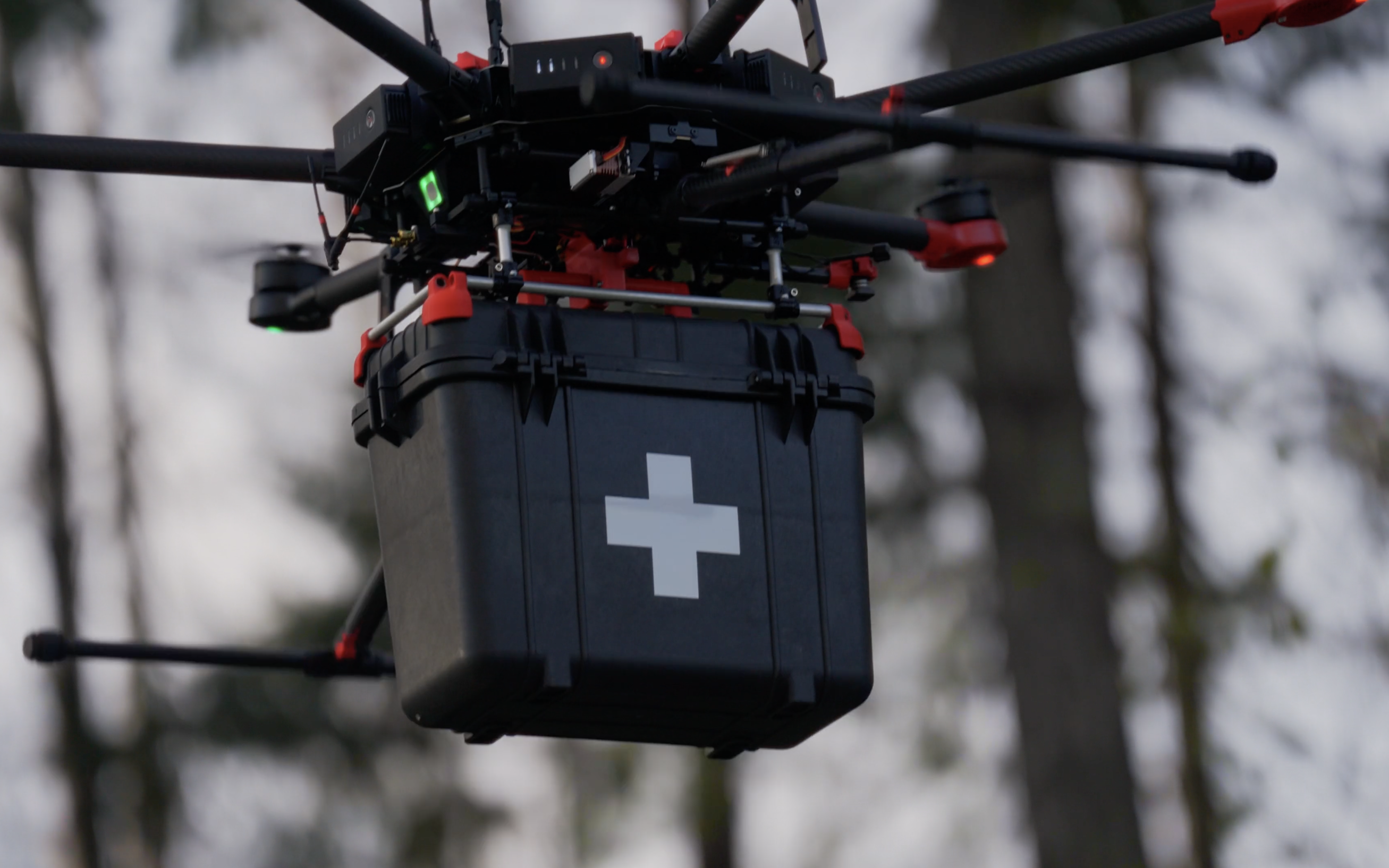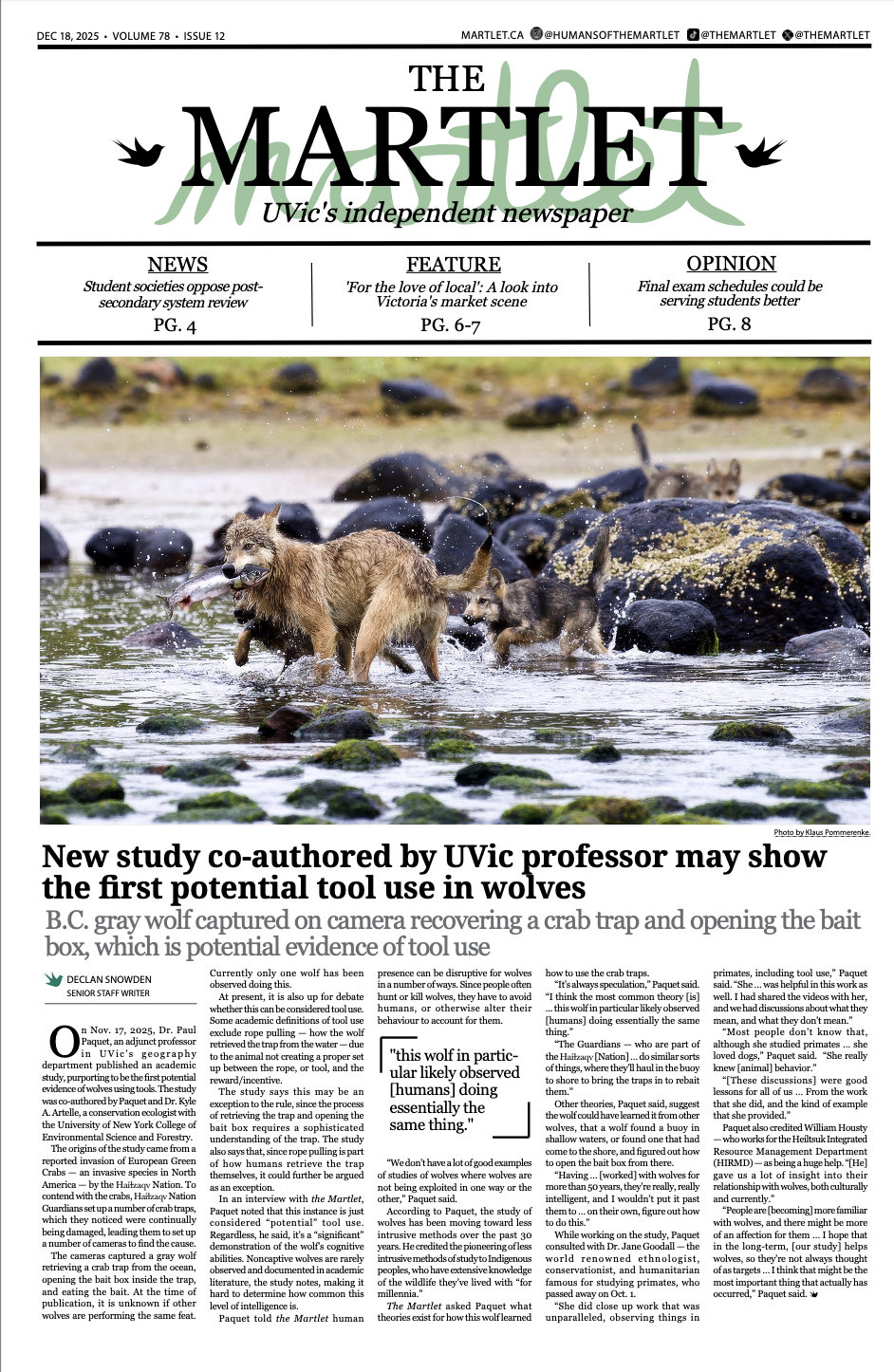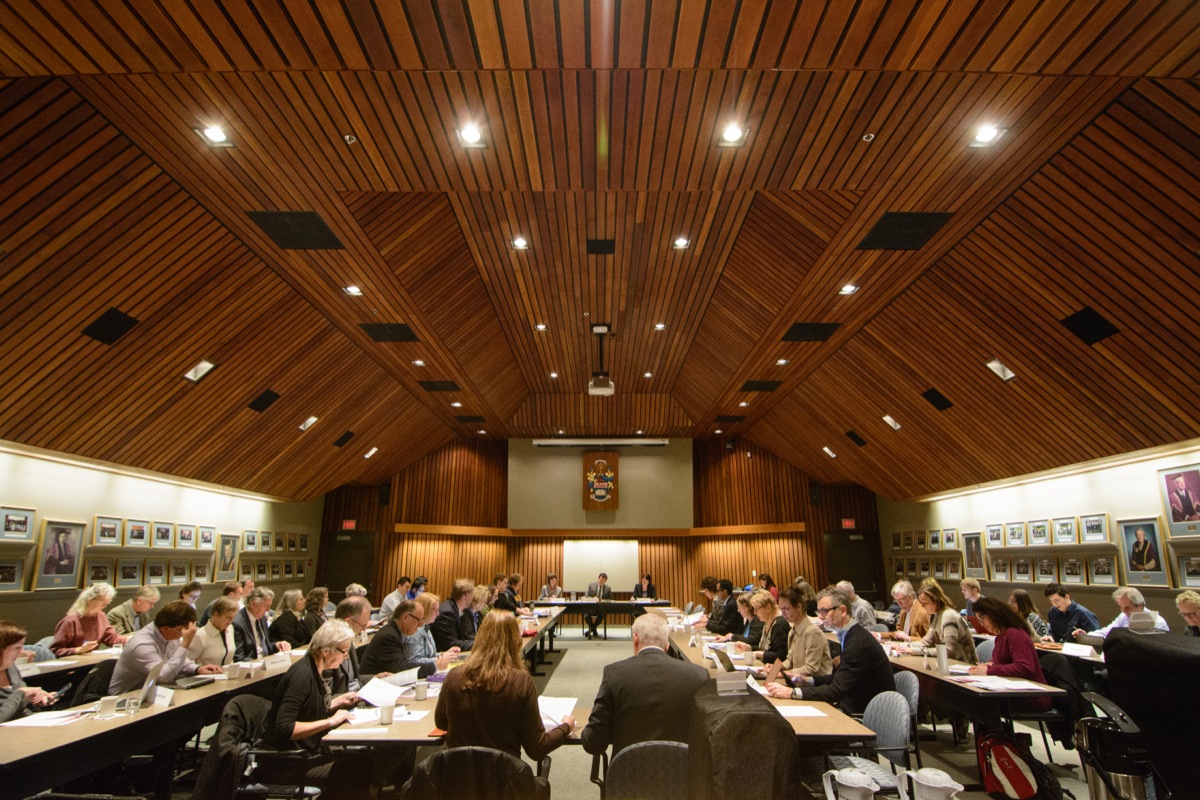Centre for Aerospace Research and Island Health are looking skyward for the future of healthcare delivery services

Photo via Island Health.
A budding partnership between UVic’s Centre for Aerospace Research (CfAR) and Island Health highlights the innovative future of healthcare on Vancouver Island, and the groundbreaking work being done by UVic researchers.
Last month, CfAR held a demonstration at the North Island Hospital in Comox Valley with their six-bladed hexacopter drone, which carried a medical supply box to simulate the delivery of medical supplies. A hexacopter is a multi-router drone capable of taking off and landing vertically, as well as hovering in mid-air, using six motors to do so.
The demonstration was a “promising first step” for health care delivery, according to a news release from Island Health.
Access to health care in rural and remote communities can be a challenge for both residents and care providers. One example cited in the Island Health news release was the ferry to the Cormorant Island Health Centre, which is occasionally out of service due to weather or other unfavourable conditions, subsequently creating barriers to accessing healthcare for the community.
However, drones offer new possibilities in the field of medical delivery services. For example, they could be used to deliver pharmaceutical supplies, medical supplies, and medications to remote communities, and to bring lab samples back from these communities.
A network of drones could be a “technological transformation” for medical services according to David Hall, operations director for Laboratory Services for the Central and North Island.
Jacob Verhelst, a UVic Mechanical Engineering alum, is a Mechanical Engineer-in-training and Procurement Lead at CfAR.
“This demo was a first step into a potential partnership, exploring how drone technology can be used to improve and expand the level of healthcare that’s being provided around Vancouver Island, with a distinct focus on rural and remote communities,” he explained in an interview with the Martlet.
Conversations with Island Health beginning in early 2024 led to the recent drone demonstration.
“The goal is to be able to provide those services at a bit of an increased frequency or, for example, when other transportation methods aren’t available,” Verhelst said. The two focuses are increasing frequency and reliability, he added.
CfAR, which began in 2012, has students working alongside full-time engineers and designers, with the aim of facilitating and supporting aerospace research and exploring advancements in technology. CfAR not only supports undergraduate and graduate students with their research and projects, but also partners with external groups and companies to explore and experiment with various topics.
According to their website, CfAR is committed to “advancing innovation and sustainability in aerospace solutions through rigorous research and development.”
In a video from the recent demonstration, Max Jajszczok, executive lead of Rural and Remote Health Sustainability and Clinical Services Planning, said that the drones could help facilitate “smoother logistics to be able to help provide supplies and services to rural communities, or receive supplies in hard-to-reach areas.”
CfAR will continue working with Island Health on innovative healthcare solutions following the successful demonstration, and are looking into the possibility of a partnership under the new North Island Research and Innovation Hub.
“We’re starting small, but it’s by no means the limit of what we’re able to do,” Verhelst told the Martlet.
“The success of the project can be measured in a lot of different ways,” Verhelst said. “If we’re able to make that difference and we’re able to bring some positive change and positive development, that’s already a win for me.”
The timeline for the project is still to be determined, as the demonstration was only the first step, but the CfAR team is excited about the opportunities this technology could create for the healthcare field.
Further demonstrations are slated for early 2025, and will likely take place north of Campbell River.








